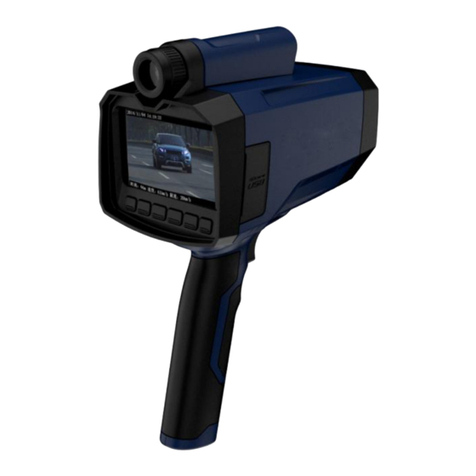
heat, cracking or igniting the battery.
Note: Lithium-ion batteries are unstable (potentially dangerous) at extremely low and high
temperatures
Charging temperature range: 0°C to 45°. Charging temperatures outside this range may
cause the battery to become hot or cracked, or probably damage the battery's
performance and reduce the expected battery life.
When the charger is normally charged, the charger is red, and when the charger is green,
the battery is sufficient.
14.3 Battery Handle Installation
Align the battery handle with the bottom of the instrument, press it flatly, and then push it
into place. Tighten the screws on the battery handle.
14.4 Removing the battery handle
Loosen the screws on the battery handle. Pull the battery handle out of the direction of the
display, you can remove the battery handle.
15. Important Safety and Product Information
Warnings:
Use of the product against the sun is strictly forbidden
Use of the product against the sun will be detrimental to your eyes.
Improper use of batteries will cause the batteries to heat, crack and even burn, which
causes severe damage.
Must follow safety rules as below:
Do not throw batteries to fire or high-heat stuff.
Do not reversely place the negative and positive polarities.
Do not use metal things like wires to connect the positive and negative polarities.
Do not mix or store batteries with hairpin, necklace or other metal stuff.
Do not puncture the batteries with nails or use the hammer to crush batteries, the feet to
step on batteries or any intense hit or shake.
Do not directly solder batteries.
Do not expose batteries directly in water or salt water. Please keep batteries dry.
Do not dismantle or modify batteries.
The batteries have safety protect equipment, which, if damaged, will cause batteries to
heat, crack or burn.
Do not put batteries close to fire or other high-heat occasions.
Do not directly put or store Lithium batteries under the sun. If the batteries have to be put
inside the vehicle in hot weather, please put the batteries in cool place. Do not direct
expose the batteries under the sun. Direct exposure and high temperature will cause
batteries to heat, crack and burn. If batteries are used improperly like that, it will reduce
the durability of the equipment and damage of performance.
Except professionals, do not use any equipment to dismantle batteries
If original batteries are used on other devices, battery life will be damaged and reduced. If
the device causes abnormal current, it will cause batteries to overheat, crack and burn,
thus causing serious damage.
9




























